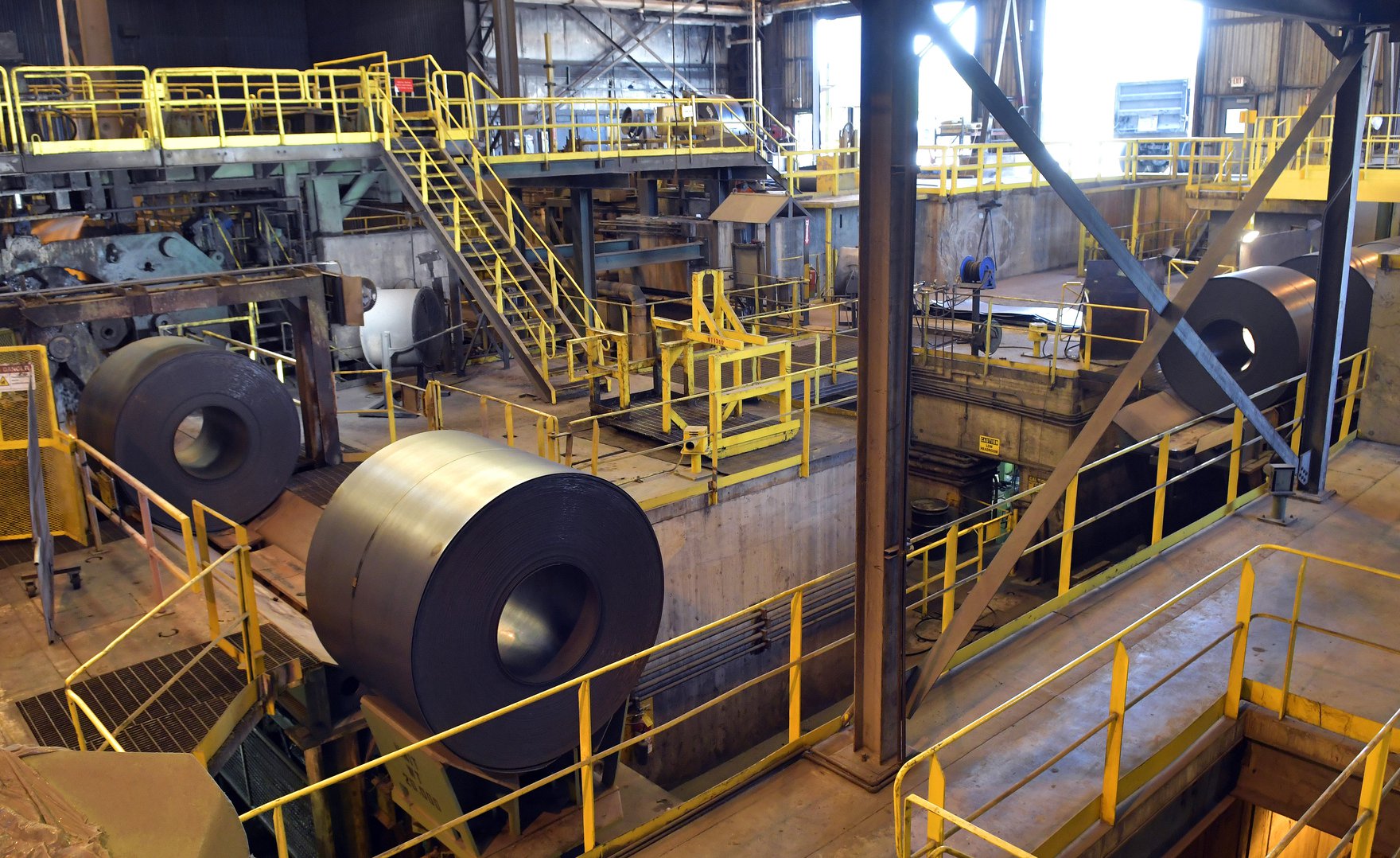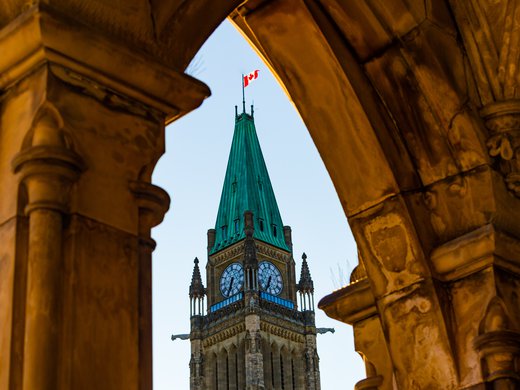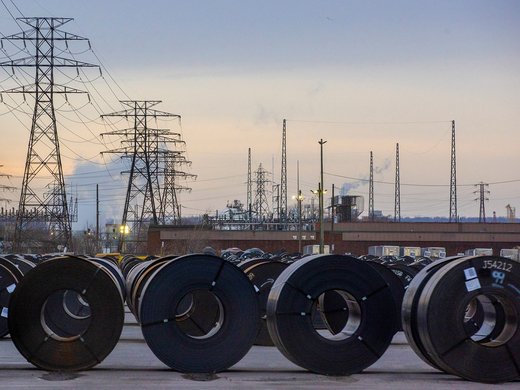President Donald Trump is pressing ahead with a signing ceremony for the United-States-Mexico-Canada Agreement (USMCA), for either November 29 or November 30.
But for Canadian Prime Minster Justin Trudeau to participate, a few controversial cross-border issues still have to be ironed out.
Consider that Canada’s ambassador to the United States, David MacNaughton, told the Canadian Broadcasting Corporation last week that he can’t imagine having some kind of celebratory event — “the kind of event where everyone is signing and shaking hands and being happy” — as long as controversial US tariffs on Canadian steel and aluminum exports still exist.
“We’re satisfied with the USMCA agreement, we think it is good for Canada, but I think we’ll hold the celebration until after we know that our workers in the steel and aluminum industry are protected,” MacNaughton said.
At issue is a 25 percent tariff on Canadian and Mexican steel entering the United States and a 10 percent tariff on aluminum imports that the United States imposed in May, based on national security grounds. Canada and Mexico quickly hit back with their own tariffs. On July 1, Canada implemented tariffs on an estimated CDN$16.6 billion in imports of US steel, aluminum and many other products, including yogurt, roasted coffee, orange juice, mayonnaise, toilet paper and more.
Both sides appear to be at an impasse. Even so, policy onlookers contend that one of the last bits of leverage that Canada has when it comes to getting rid of the steel and aluminum tariffs is the signing of the USMCA deal.
“Where is the leverage when the agreement is signed?” asked Clifford Sosnow, an Ottawa- and Toronto-based international trade lawyer and partner at Fasken. “There will be zero leverage. The hook is that once that signing is gone, [Canada] will have a difficult time saying ‘let’s still renegotiate.’”
Mexico is also putting on pressure about the steel and aluminum tariffs. The signing had tentatively been scheduled so that outgoing president Enrique Peña Nieto could approve the deal before Mexican President-elect Andrés Manuel López Obrador’s new government takes over. But Mexico’s deputy commerce minister recently suggested that he won’t sign the USMCA deal unless the United States removes the steel and aluminum tariffs.
What could Canada, the United States and Mexico agree on, when it comes to steel and aluminum tariffs? The answer may involve quotas, even though at least one report has suggested that Canada isn’t likely to accept quotas any time soon. Further, even if all three countries accept a quota, the question remains over what kind of quotas would be acceptable to everyone.
Gary Clyde Hufbauer, a senior fellow at the Peterson Institute for International Economics in Washington, said he believes that all three countries will be able to reach a compromise, possibly in advance of the USMCA signing ceremony. He wagers that new quotas would restrict aluminum and steel imports to the United States to 2017 and 2018 pre-tariff levels.
“They would essentially prevent an expansion of imports beyond the existing level of imports so that if the US economy starts growing like gangbusters, Canada won’t be able to expand its exports,” Hufbauer said. “I expect Canada to agree to this; they are feeling the pinch from these tariffs.”
Sosnow suggested that Canada might make a political calculation to accept a quota system. However, unlike Hufbauer, he believes the quota may have to be higher than the amount of aluminum and steel exported from Canada to the United States last year. There would have to be some room for Canada’s steel and aluminum exports to grow — and for potential renegotiation down the road.
“It has to be a high number,” Sosnow said. “Being based on last year’s number is not enough political cover for the Trudeau government to accept.”
Sosnow noted that an agreement might look similar to what Canada and Mexico negotiated with the United States on auto tariffs and quotas as part of the USMCA. In that deal, Canada accepted that if Trump imposes section 232 auto tariffs on national security grounds, as he has threatened to do in the past, then Mexico and Canada would get a tariff-free passenger vehicle quota of 2.6 million passenger automobiles exported to the United States annually, which is significantly above their existing export levels.
“If it was baked in, at least the Canadian administration would say, ‘we have peace in our time similar to what was achieved in the automobile industry and that it may be some time before the quota cap is reached and by then there will be a new administration that can renegotiate it,’” he said.
Another factor is at play; if Mexico accepts a quota system in exchange for removal of the tariffs, it would be difficult for Canada not to try to negotiate on quotas as well.
“The truth is everyone has a price,” Sosnow said. “And if that price is sufficiently high enough, Canada will say yes.”
The polarized speculation about aluminum and steel tariffs speaks to a broader issue — that although an agreement was formally reached on the USMCA, there is still a lot of unfinished business. The deal still has to be ratified by legislatures in all three countries. The US Congress still needs to approve it, and a recently elected Democrat majority in the House of Representatives may want to put their own imprint on it. Some observers don’t believe the deal will be approved until the spring of 2019.
Avery Shenfeld, chief economist at CIBC Markets in Toronto, said he believes that it is much more likely that Canada will accept a quota system that allows for imports significantly higher than the amount of aluminum and steel exported from Canada to the United States last year.
According to Shenfeld, Canada still has some leverage; it can try to drive negotiations on the tariffs as it discusses whether Prime Minister Justin Trudeau will participate in a signing ceremony with the United States.
“The [USMCA] still gets signed, perhaps unceremoniously, but that’s not the last piece of leverage Canada would have,” Shenfeld said. “There are US economic interests that want free trade. The energy industry is a big user of steel — the entire steel-consuming sector of the US is on record saying they aren’t happy with it.”
The next phase of negotiations is fast approaching. The Trump administration is under intense pressure from major business and trade union interests, in the auto, brewery and energy sectors, for example, to drop the aluminum and steel tariffs. For now, all eyes remain focused on November 29, when a signing ceremony — perhaps coupled with the end of steel and aluminum tariffs — could emerge.




